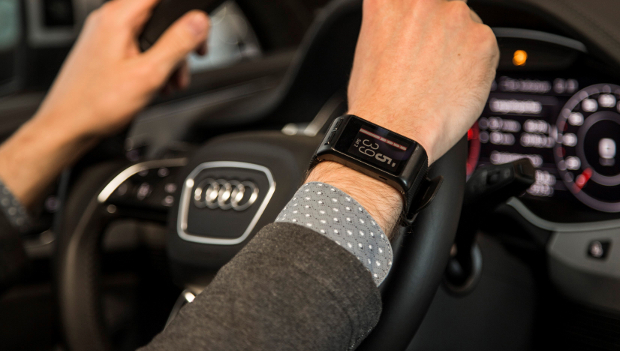Wi-Fi communications in vehicles, whether from the factory or in aftermarket devices, will increase from 6.9 million per year in 2015 to 61 million per year in 2020 – and this will usher in a new era of consumer services and applications, according to a new report from Gartner.
Over the next four years, the total number of connected cars and trucks will reach 220 million, a number that will drive a huge uptick in the delivery of digital content, such as streaming music and video, navigation and location-based services.
Connected vehicles increasingly will be able to direct drivers to, and pay for, parking spaces, fuel and other services, and the technology will eventually enable increased levels of automated driving, Gartner’s report stated.
For example, three years ago Audi rolled out its Audi Connect wireless parking-payment program, which connects cars and car parks’ services. The technology not only lists the location of area car parks, but allows parking barriers to be raised – and automatically pays for spaces.
The Audi Connect service also provides drivers a list of area petrol stations along with real-time pricing information.
Internet-connected vehicles will also enable innovations in related businesses, such as insurance, car rental, car- and ride-sharing services, and electric vehicle charging.
“The connected vehicle is the foundation for fundamental opportunities and disruptions in the automotive industry and many other vertical industries,” James Hines, a research director at Gartner, said in a statement. “Connected vehicles will continue to generate new product and service innovations, create new companies, enable new value propositions and business models, and introduce the new era of smart mobility, in which the focus of the automotive industry shifts from individual car ownership to a more service-centric view of personal mobility.”
By 2018, embedded communications modules will overtake mobile device tethering via dongles attached to vehicle OBD II ports as the dominant mode of connectivity in cars, the report stated. Since 1996, all vehicles have had standardized OBD (onboard diagnostic) ports, which allow mechanics to check the status of various vehicle subsystems.
Over the past several years, the insurance industry has been utilising OBD ports to offer rate discounts when drivers agree to plug dongles into them, which allow insurers to track a vehicle’s driving history.
Internet connectivity will also be critical in supporting new automated driving functions, such as adaptive cruise control, collision avoidance and lane departure warning systems, all of which require real-time camera and sensor data processing and pattern recognition.
Demand-driven
From 2016 through 2020, Gartner predicts, future connected car applications will drive a 150% increase in demand for contextual information, such as image detection and geolocation.
“As cars become more automated, they are being equipped with an increasing array of sensing technologies, including cameras and radar systems,” Hines said. “Many automobiles will use image detection as the primary means to identify and classify objects in the vicinity of the vehicle so they can provide more sophisticated responses and even have autonomous control.”
Improving fuel efficiency and reducing emissions will necessitate sophisticated engine and transmission control systems, which are relatively low-level functions well suited to vehicle microcontroller units.
As human-machine interaction technologies – such as touch control, gesture control, gaze control and speech recognition – increase, so too will the need for more sophisticated middleware. Middleware will also support consumer telematics services that allow the car to communicate diagnostic and maintenance information and address driver and passenger queries, as well as support over-the-air software updates.
As middleware grows to process the tsunami of new data, cars and trucks will require more powerful processing hardware, which is what is precipitating the shift from 8-bit microcontrollers to 32-bit processors in vehicles, Garter stated.
The automobile chip business is already booming and has become one of “the hottest target markets for semiconductor makers,” according to the Wall Street Journal (WSJ). Over the past year, according to the WSJ, chip makers have penned a total of $75 billion worth of deals with the auto industry.
Over the weekend the WSJ reported that Qualcomm is in talks to acquire Netherlands-based NXP Semiconductors for more than $30 billion. The deal would make Qualcomm the largest supplier of chips for cars.
In 2014, Freescale became the first top microchip supplier to announce an automotive-grade Ethernet chipset and software, paving the way for car makers to install 100Mb/s networks in vehicles.
Freescale’s processors connected in-car electronics, such as telematics and infotainment systems, to Wi-Fi routers over standard two-wire twisted pair cable, versus CAT 5, making it robust enough to serve as a networking topology for vehicles.
By 2020, many cars will have 50 to 60 Ethernet ports and even entry-level vehicles will have 10, according to a study by research firm Frost & Sullivan. (Premium vehicles will likely have more than 100 Ethernet nodes by then.)
IDG News Service





Subscribers 0
Fans 0
Followers 0
Followers